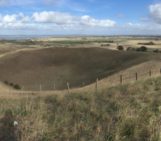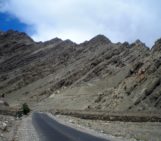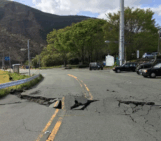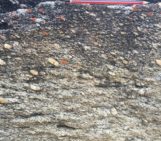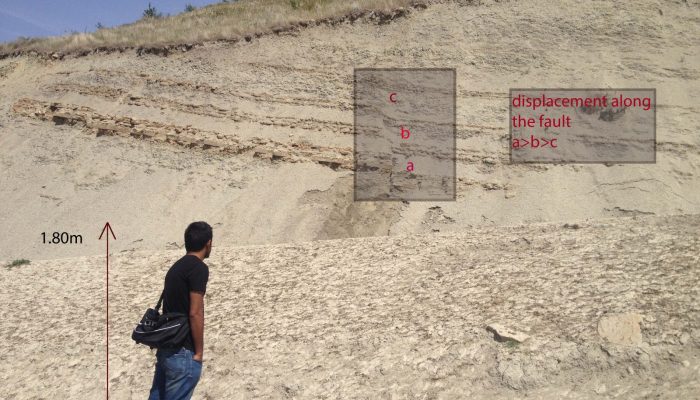
Growth faults are syndepositional or syn-sedimentary extensional faults. Growth faults develop when sediments are being deposited, are key elements in understanding deformation processes. Indeed, successively deposited sedimentary layers are involved in the different stages of the growth of the structure and produce a record of the deformation history. Their fault plane dips mostly toward the basin and has long-term continuous displacement.
As the fault grows upward, it cuts through the newly formed sedimentary layers at the top. Therefore, the overall displacement along the fault plane is not the same. Further, the lowermost layer has higher displacement than the uppermost layer while the intermediate layer displacement lies in between (See Figure). Because the fault plane flattens into décollement, the downthrown block moves basinward and the displaced sedimentary layer of the downthrown block bends close to the fault plane forming rollover anticline, synthetic and antithetic faults.

